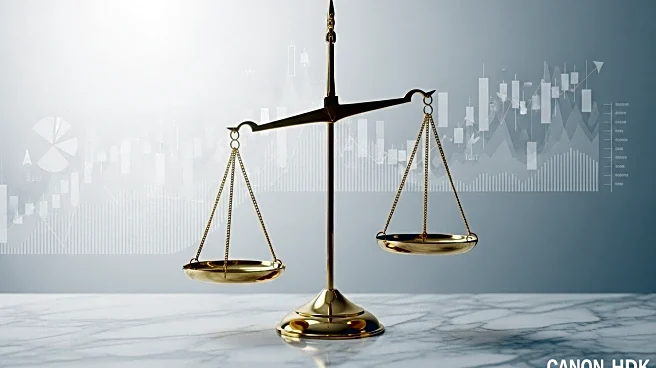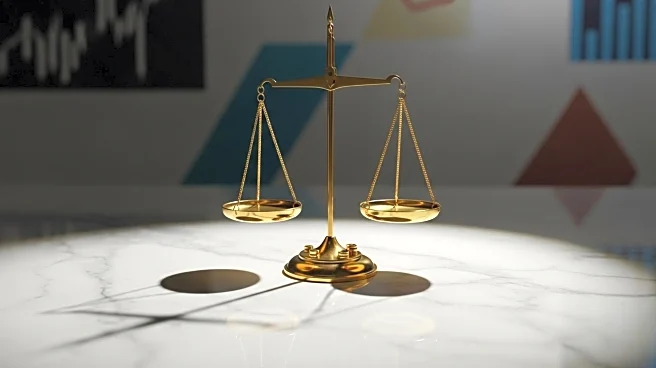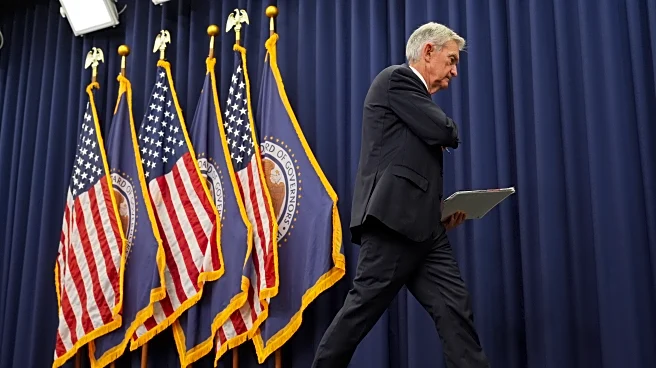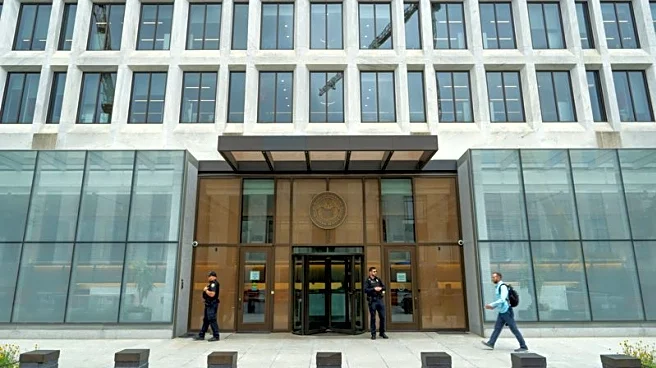What is the story about?
What's Happening?
The Federal Reserve has announced a quarter-point interest rate cut, reducing the benchmark federal funds rate to a range of 4% to 4.25%. This decision, described by economist Mark Zandi as 'more hawkish than anticipated,' aims to manage economic risks, particularly those affecting job growth. Despite the cut, the Fed signals no immediate plans for further reductions, maintaining a cautious approach. The move comes amid political pressures, with Governor Stephen Miran, who holds dual roles in the White House and the Fed, advocating for deeper cuts. Federal Reserve Chairman Jerome Powell emphasized the institution's commitment to independence, despite these pressures.
Why It's Important?
The interest rate cut is significant as it reflects the Federal Reserve's strategy to balance economic risks, including slowing job growth and inflationary pressures. The decision impacts various stakeholders, including businesses and consumers, by influencing borrowing costs and economic activity. The Fed's cautious approach suggests concerns about potential stagflation, where inflation and unemployment rise simultaneously. The political dynamics, particularly Miran's dual role, raise questions about the Fed's independence, which could affect future monetary policy decisions and economic stability.
What's Next?
The Federal Reserve is expected to consider additional rate cuts in upcoming meetings, potentially in October and December, to return rates to a neutral level by mid-2026. The nomination of a new Fed Chair next year will be crucial in determining the institution's future direction and independence. The Fed's ability to resist political pressure and maintain its policy objectives will be tested, influencing economic outcomes and market confidence.
Beyond the Headlines
The Fed's decision highlights the complex interplay between economic policy and political influence. The unusual dual role of Governor Miran underscores potential challenges to the Fed's independence, which could have long-term implications for monetary policy and economic governance. The situation also reflects broader concerns about the balance between inflation control and employment support, a critical issue in maintaining economic stability.
AI Generated Content
Do you find this article useful?















